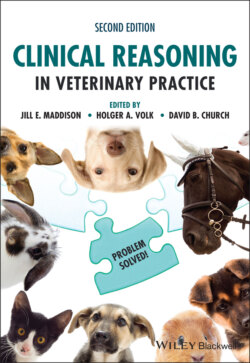Читать книгу Clinical Reasoning in Veterinary Practice - Группа авторов - Страница 64
Define the location
ОглавлениеIf primary GI disease is determined to be present, the temporal relationship of vomiting to eating and the character of the vomitus should be used to assess where the lesion is likely to be – the upper or lower GI tract.
Diagnostic tools such as contrast radiography may be appropriate to localise the lesion. An assessment of the likely location of the lesion is important, as this may determine what further diagnostic procedures are suitable. For example, endoscopy would be appropriate for examining the stomach and possibly duodenum but will be of little use if lower small bowel disease is suspected.
Defining the location for secondary GI disease usually involves routine clinical pathology and dynamic or function tests +/− imaging to localise the organ affected, for example, liver, kidney, pancreas and adrenals.
The location of the problem for patients who are regurgitating is almost always the oesophagus (occasionally the pharynx), whether the cause is primary or secondary GI. Thus, regurgitation is a clinical sign where location is considered first, and then the question is asked, Is this a primary or secondary GI lesion?
